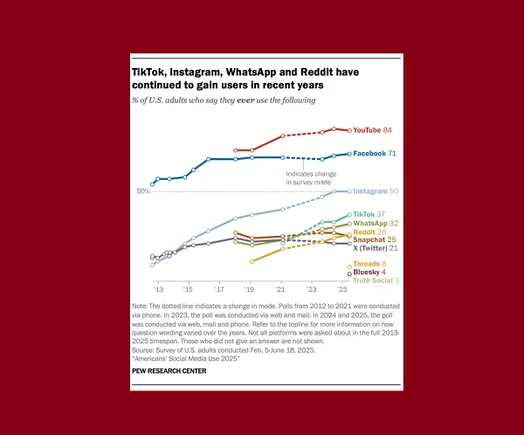TL;DR Summary of Pew Research Social Media Usage Trends in the U.S.
Optimixed’s Overview: Key Insights into American Social Media App Usage and Emerging Trends
General Usage Patterns Among U.S. Social Media Users
Pew Research conducted a survey of 5,000 Americans to assess which social media apps people open regularly, providing a snapshot of current usage trends rather than in-depth engagement metrics. According to the findings:
- YouTube and Facebook remain dominant, with 71% of respondents indicating they have ever used Facebook.
- Instagram also ranks highly, alongside emerging growth seen in TikTok, WhatsApp, and Reddit.
- The survey question focused on whether users have ever accessed the app, not their preferred platform or total time spent, which suggests Facebook’s broad but perhaps less intense engagement compared to apps like TikTok.
Daily Usage and New Entrants
The report also examined how often users visit each app:
- Facebook remains a daily habit for many, aided by increased Reels content.
- New social platforms such as Threads have gained around 8% user adoption in this sample, outpacing Bluesky at 4%, yet still behind X at 21%.
- While Threads is growing steadily, X continues to maintain a significant presence despite some user decline.
Demographic Variations and Limitations
The survey also highlights differences in social media preferences among younger users, where Instagram, Snapchat, and TikTok lead. Additional insights include:
- Variations by gender, political leaning, and ethnicity, illustrating diverse usage patterns.
- The study’s scope is limited by its question design, which emphasizes app usage frequency without measuring time spent, making it a general indicator rather than a precise measure of popularity or engagement.
- The sample size of 5,000 respondents offers valuable insights but represents only a fraction of the U.S. population.
Overall, Pew Research’s findings provide a useful overview of social media app usage trends in America, highlighting both dominant platforms and emerging competitors, while underlining the need for deeper engagement metrics to fully understand user behavior.
